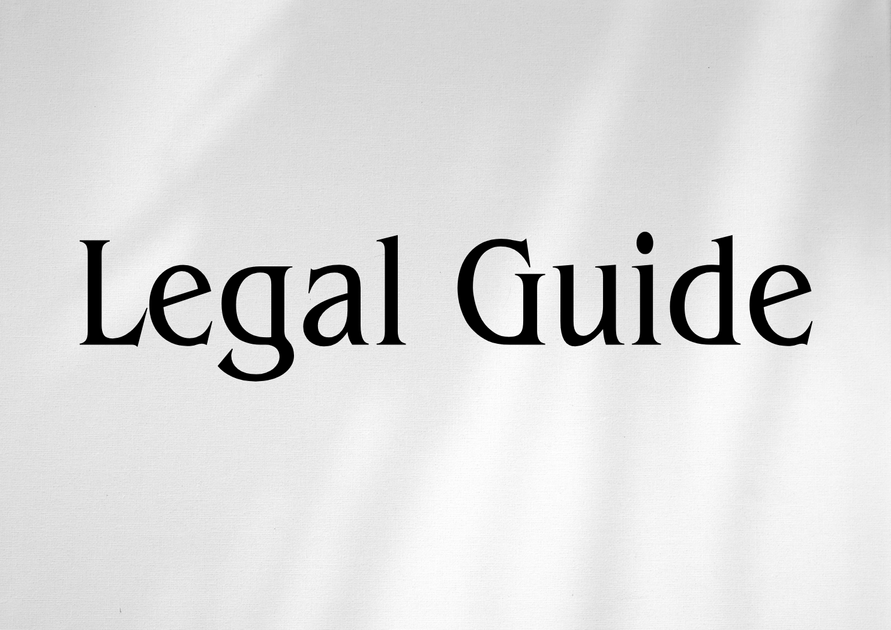Introduction to Airspace Management and Sovereignty Under UAE Law
Amid unprecedented growth in aviation, logistics, and advanced technologies such as drones and unmanned aircraft, the United Arab Emirates (UAE) has emerged as a regional leader in the regulation of airspace management and protection of sovereign airspace. With a unique geographical position linking East and West and hosting world-class airlines and airports, effective airspace management is not simply an operational issue but a matter of national security, economic competitiveness, and international legal compliance.
Recent years have witnessed significant updates to UAE federal airspace laws, regulations, and related Cabinet Resolutions—reflecting new security imperatives, technological transformations, and international obligations. These reforms are relevant for aviation operators, logistics companies, multinationals, technology providers, and any entity that operates or benefits from the UAE’s controlled skies. Comprehensive compliance is essential for organizational risk management and long-term business success.
This article provides a consultancy-grade legal analysis of UAE airspace management and sovereignty, focusing on essential legislative developments, regulatory frameworks, and practical compliance strategies. We examine the impact of Federal Law No. 20 of 2022 on the Regulation of Civil Aviation, related UAE Cabinet Resolutions, updates for 2025, and the integration of international conventions into national law. Through real-world examples, case studies, compliance checklists, and professional insights, this article equips UAE-based businesses and legal professionals to navigate the present and future of the nation’s airspace landscape.
Table of Contents
- UAE Legal Framework Governing Airspace Management
- Airspace Sovereignty and National Security
- Civil Aviation and Military Airspace Coordination
- Drones and New Technologies: Legal Compliance Requirements
- Comparative Analysis: Old vs. New UAE Airspace Laws
- Practical Guidance and Case Studies
- Risks of Non-Compliance and Compliance Strategies
- Future Trends and Best Practice Recommendations
- Conclusion: Strategic Imperatives for UAE Stakeholders
UAE Legal Framework Governing Airspace Management
Federal Law No. 20 of 2022 on the Regulation of Civil Aviation
At the heart of the UAE’s airspace regime lies Federal Law No. 20 of 2022 on the Regulation of Civil Aviation (the “Aviation Law”). This comprehensive statute consolidates previous legal instruments and introduces new provisions which reflect international standards set forth by the International Civil Aviation Organization (ICAO) and the Chicago Convention, to which the UAE is a party.
- Sovereignty Clause (Article 5): Reaffirms the UAE’s exclusive and complete sovereignty over the airspace above its territories and territorial waters, barring any unauthorized use or overflight.
- Airspace Management (Articles 8–10): Establishes procedures for designating controlled and restricted zones, air navigation service provision, and delineates responsibility between civil and military authorities.
- Licensing and Approvals: Details stringent requirements for the licensing and operation of aircraft—including UAVs—and mandates compliance with technical and security standards.
- Penalties and Enforcement: Provides for robust penalties—both civil and criminal—against unauthorized airspace use or operational breaches (see comparative table below).
The General Civil Aviation Authority (GCAA), vested with significant regulatory and enforcement authority under this law, is empowered to issue clarifying guidelines, operational circulars, and secondary regulations. Federal Law No. 20 of 2022 was further implemented by GCAA Executive Regulations issued in 2023 and a series of Cabinet Resolutions, ensuring comprehensive and up-to-date coverage of airspace management issues as of 2025.
Key Supporting Legal Instruments
- Cabinet Resolution No. 30 of 2023: Specifies the demarcation of restricted and controlled airspace zones, conditions for special-use authorizations, and procedures for civil-military coordination.
- Ministerial Decision No. 14 of 2024: Updates requirements for the registration and operation of unmanned aerial vehicles (UAVs), including mandatory geo-fencing and digital registry compliance.
- Federal Decree-Law No. 5 of 2019 (Amended 2024): Addresses national security, anti-terrorism, and emergency provisions applicable to airspace incursions or unlicensed operations.
Integration of International Conventions
The UAE abides by the Chicago Convention (1944), Montreal Convention (1999), and various ICAO standards and recommended practices, which have direct influence on national law through GCAA Executive Regulations and periodic Cabinet Resolutions. The legal structure is designed to ensure compatibility with global aviation compliance expectations, facilitating international business and aviation operations within and through the UAE.
Airspace Sovereignty and National Security
Defining Sovereign Airspace
Under Article 1 of Federal Law No. 20 of 2022, UAE sovereign airspace includes all the air above its land territory and territorial waters, generally up to the upper limit of the atmosphere. The exclusive right of the UAE to regulate, manage, and control access to its airspace is non-negotiable and protected under both domestic and international law.
Authorizations and Permitted Overflights
- All aircraft overflights—commercial, governmental, and state—require prior authorization from the GCAA and, when applicable, the Ministry of Defense.
- Diplomatic clearances, emergency flights, and humanitarian missions are processed under expedited protocols but remain strictly regulated.
- UAV operations, foreign or domestic, are expressly prohibited without GCAA and Ministry of Interior permits, with real-time tracking and geo-fencing requirements.
National Security Considerations
Cabinet Resolution No. 30 of 2023 introduced enhanced “contingent airspace zones,” allowing rapid designation of areas subject to heightened restrictions during emergencies, national events, or in response to regional security threats. Violation of such zones constitutes a criminal offence under both the Aviation Law and Federal Decree-Law No. 5 of 2019 (as amended 2024), with severe penalties, including the confiscation of assets, business license suspension, and potential imprisonment of responsible officials.
Civil Aviation and Military Airspace Coordination
Shared Responsibilities
Effective management requires seamless integration of civil and military interests, especially within the UAE’s complex and strategically essential airspaces. Article 10 of the Aviation Law mandates the establishment of Civil-Military Coordination Committees (CMCCs), which are tasked with:
- Coordinating flight paths and scheduling for military and civilian aircraft.
- Determining exclusive-use periods for military exercises or events.
- Maintaining dynamic communication and incident reporting structures between the GCAA and Armed Forces Air Defence Command.
Operational Implications for Operators and Businesses
Entities planning to conduct operations near military facilities, critical infrastructure, border zones, or during major public events (e.g., Expo, Formula 1, government summits) must seek specific pre-approvals from both civil and military authorities. Failure to comply exposes organizations to severe administrative and criminal liabilities.
Comparative Table: Pre-2022 vs. Post-2022 Coordination Mechanisms
| Feature | Before Federal Law No. 20 (pre-2022) | After Federal Law No. 20 (2022–2025) |
|---|---|---|
| Approval Complexity | Separate submissions to multiple agencies | Unified ‘one-stop’ approval via GCAA e-portal, automatic CMCC support |
| Incident Response | Reactive reporting, multiple contact points | Real-time reporting via digital incident desk, direct GCAA-military link |
| Penalties | Fines up to AED 250,000; limited criminal enforcement | Fines up to AED 1,000,000; criminal prosecution and license suspension |
Drones and New Technologies: Legal Compliance Requirements
Legal Landscape for UAVs and Emerging Technologies
The regulatory environment for drones and advanced air vehicles has evolved rapidly in the UAE. Under Ministerial Decision No. 14 of 2024 and GCAA Notice 6/2024, all drone operators (commercial, recreational, or governmental) face stringent licensing, registration, and operational obligations:
- Mandatory Registration: All drones weighing more than 250 grams must be registered in the national digital registry.
- Geo-Fencing: UAVs must incorporate geo-fencing technology to prevent entrance into restricted airspace.
- Operational Limits: Altitude restrictions (typically 122m/400ft), daylight-only flight in populated areas, and prohibited operations near airports, military bases, or sensitive installations.
- Data Privacy: Operators must certify non-collection of sensitive images/data without explicit consent.
- Insurance: Mandatory third-party liability insurance for all commercial UAV flights.
Case Example: Logistics Provider Launching UAV Deliveries
A leading logistics company sought to launch UAV-based delivery solutions in Dubai’s urban districts. The company was required to:
- Secure GCAA and Dubai Police operational permits,
- Install approved geo-fencing hardware and submit flight plans to the GCAA’s e-portal,
- Implement a real-time tracking dashboard accessible by authorities,
- Undertake a data privacy audit to ensure compliance with UAE cyber and privacy laws.
Failure to comply with these strictures would have resulted in civil penalties of up to AED 1 million and an indefinite suspension of aviation and business licenses.
Comparative Analysis: Old vs. New UAE Airspace Laws
Major Legislative Updates and Their Impact
| Aspect | Pre-2022 Laws | Federal Law No. 20 of 2022 and Updates (2023–2025) |
|---|---|---|
| Sovereignty Definition | Implied, limited definition in law | Explicit, comprehensive coverage (incl. digital airspace boundaries) |
| UAV Regulation | Generic provisions, limited enforcement | Detailed registration, geo-fencing, insurance, data protection |
| Civil-Military Coordination | Fragmented approvals, unclear mandates | Integrated CMCCs, digital one-stop approvals |
| Penalties | Fines up to AED 250,000; limited criminal sanctions | Fines up to AED 1 million; criminal prosecution, asset confiscation |
Suggested Visual/Table
Place a visual compliance checklist summarizing UAV operational requirements, recommended for onboarding new drone operators.
Practical Guidance and Case Studies
Case Study 1: International Airline Launching New Routes
An international airline planned to initiate new direct routes into Abu Dhabi and Sharjah. Their compliance strategy included:
- Submitting advance flight plans and overflight clearance requests through the GCAA digital portal,
- Consulting with a licensed UAE law firm to ensure crew licensing and insurance met new statutory standards,
- Establishing a compliance ‘airspace monitoring desk’ able to respond to real-time regulatory updates issued by the GCAA or Ministry of Defense,
- Undertaking periodic audit by independent aviation compliance experts.
Case Study 2: Corporate Security Firm Operating High-Endurance Surveillance Drones
A UAE-based security firm sought to operate high-endurance surveillance UAVs for government infrastructure monitoring. Key legal steps taken included:
- Undergoing security vetting by the Ministry of Interior,
- Incorporating biometric registration of all drone pilots and technical crew,
- Securing waivers for certain restricted zones through tripartite GCAA-MoD-Ministry of Interior Committee deliberations,
- Implementing an ‘incident log’ and reporting protocol in line with GCAA and Federal Decree-Law No. 5 of 2019 (as amended 2024).
Risks of Non-Compliance and Compliance Strategies
Legal Risks for Organizations
Firms that fail to meet the UAE’s robust airspace management requirements face the following principal risks:
- Financial Sanctions: Hefty fines (up to AED 1,000,000 for severe violations) for unauthorized flights or failure to secure approvals.
- Criminal Liability: Prosecution of company officials, asset seizures, and potential imprisonment in cases of deliberate or reckless airspace breaches.
- Operational Disruption: Immediate grounding of all operations, suspension of business licenses, and negative reputational impact within the UAE legal and business community.
- Insurance and Contractual Risks: Loss of insurance coverage and nullification of commercial contracts if operations are found unlawful or unauthorized.
Best Practice Compliance Strategies
- Legal Due Diligence: Conduct legal audits of all aviation or technology-related business units, with a focus on the latest GCAA executive regulations and city-level restrictions.
- Centralized Compliance Management: Establish a dedicated compliance function for airspace operations. Maintain a regularly updated compliance manual incorporating UAE legal updates for 2025.
- Technology Integration: Implement real-time tracking, geo-fencing, and incident reporting solutions in line with the latest Cabinet and Ministerial requirements.
- Training and Capacity Building: Periodically train operational, legal, and HR staff regarding the evolving compliance landscape and incident response mechanisms.
- Legal Counsel Engagement: Appoint UAE-qualified legal advisors to monitor developments, secure approvals, and represent the organization in engagement with authorities.
Suggested Visual/Table
Consider a table summarizing penalty types, enforcement authorities, and typical compliance timeframes for businesses.
Future Trends and Best Practice Recommendations
Anticipated Developments
Looking ahead to 2025 and beyond, the UAE’s airspace management regime will likely continue on its trajectory of modernization, harmonization with global standards, and technological integration. Key anticipated trends include:
- Full Digitization of Compliance Processes: Automated licensing, real-time flight monitoring, and advanced data analytics for enforcement.
- Tighter Cross-Border Data and Security Controls: Especially for UAV and autonomous aircraft operators, with further amendments anticipated under new Cabinet Resolutions.
- Sustainable and Innovative Airspace Use: Regulations facilitating advanced air mobility, urban air taxis, and greener aviation solutions.
Strategic Recommendations for UAE Businesses
- Establish proactive compliance teams dedicated to aviation and technology monitoring.
- Subscribe to GCAA/Government Portal legal circulars to stay ahead of regulatory changes.
- Invest in privacy, cyber, and geo-fencing technologies to future-proof aerial operations.
- Maintain continuous engagement with local legal counsel and industry advisers for timely regulatory intelligence.
- Foster a compliance-first culture throughout the organization—especially among executive and operational leadership.
Conclusion: Strategic Imperatives for UAE Stakeholders
The evolution of the UAE’s legal environment for airspace management and sovereignty is a testament to the nation’s ambition to stay at the forefront of aviation, technology, and national security developments. The introduction of Federal Law No. 20 of 2022 and its 2024–2025 regulatory updates imposes a new standard of diligence, planning, and operational excellence on all organizations with interests in the UAE’s skies.
For business leaders, HR managers, legal practitioners, and operational teams, the imperative is clear: embrace compliant operations, continuously monitor and adapt to legal updates, and pursue active engagement with regulators and professional advisers. By doing so, organizations will not only mitigate legal and reputational risks but also secure sustainable and competitive integration within the UAE’s vibrant and expanding airspace ecosystem.




